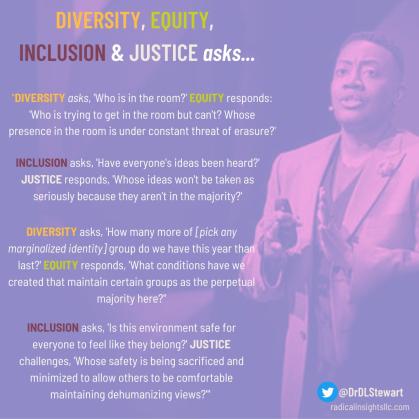DEI Committee Good Start Guide
Creating or rebooting a committee focused on diversity, inclusion, and equity is one step an organization can take in moving an organization intentionally toward being more diverse, inclusive, and equity-centered. Use the guide and embedded resources to organize or evaluate your committee’s readiness to thoughtfully engage the work required to advance diversity, inclusion, and equity.
Be clear about the purpose and charge of the committee. The absence of clarity about the purpose and charge wastes energy that could be leveraged in service to getting the job done and can decrease committee members’ buy-in.
Consider the skills and knowledge committee members have that support the committee in fulfilling its purpose. Embedding diversity, inclusion, and/or equity-building practices into an organization’s culture requires skills, knowledge, and intentionality. LinkedIn Learning, via Rutgers University, offers online resources about cultivating cultural competency and recognizing unconscious bias that may be helpful for committee members for whom diversity, inclusion, and equity are not direct research or service areas.
Establish shared language for keywords and concepts related to the topic. Use the definitions below for diversity, inclusion, and equity used within our division and the Racial Equity Tools Glossary (PDF) for guides.
Anticipate competing ideas and healthy conflict. Differences in ideas are not inherently bad. Recognize how dialogue, debate, and discussion can support idea sharing and can thoughtfully and holistically strengthen the committee’s decisions. Being clear about what respectful conversation is and is not can prevent harm, preserve and/or build relationships between colleagues, and lead to bridging ideas across differences.
Defining Diversity, Equity, and Inclusion
Shared meaning is critical to shaping our path forward.
Although the terms 'diversity', 'equity', and 'inclusion' are commonly used, we provided the definitions below to promote an understanding of how our division is using these terms to inform our institutional work.
Diversity refers to the variety of personal experiences, values, and worldviews that arise from differences of culture and circumstance. Such differences include race, ethnicity, gender and gender identity, age, religion, language, disability status, sexual orientation, socioeconomic status, geographic region, and more.
Equity refers to actively working to identify and eliminate barriers that have prevented full participation across differences in culture and circumstance, specifically redressing the exclusion of underrepresented groups in higher education. Attention to equity involves ensuring access, opportunity, and advancement for all students, faculty, and staff in every stage of education and career development.
Inclusion refers to the act of creating environments in which individuals and groups feel welcomed, respected, supported, and valued by eliminating practices and behaviors that marginalize. An inclusive climate embraces differences and offers respect in words and actions so that all people can fully participate in the university’s opportunities.
The graphic below is created by D-L Stewart and provides a useful way to think about the different questions asked and answered by a focus on diversity, equity, inclusion, and/or justice.

Diversity asks, 'Who is in the room?'
Equity responds, 'Who is trying to get in the room but can't? Whose presence in the room is under constant threat of erasure?'
Inclusion asks, 'Has everyone's ideas been heard?'
Justice responds, 'Whose ideas won't be taken as seriously because they aren't in the majority?'
Diversity asks, 'How many more of [pick any minoritized identity] group do we have this year than last?'
Equity responds, 'What conditions have we created that maintain certain groups as the perpetual majority here?'
Inclusion asks, 'Is this environment safe for everyone to feel like they belong?'
Justice challenges, 'Whose safety is being sacrificed and minimized to allow others to be comfortable maintaining dehumanizing view?'
– Dr. D-L Stewart